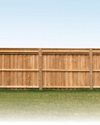
WHAT IS A TELESCOPING LADDER?
A telescoping ladder can be extended to its full height or an intermediate one. As each segment extends, a safety latch kicks in, ensuring that the ladder won't collapse until the user manually retracts it. Telescoping ladders can't reach the heights of a similarly priced extension ladder. If you're working at heights above 15 ft., go with the greater reach of an extension ladder.
ARE THEY SAFE?
When used properly, telescoping ladders are every bit as safe as standard straight or extension ladders. Most ladder-related injuries happen when users try to stretch beyond the safety zone or set ladders on uneven ground or at an unsafe angle. Also be mindful of weight limitations. All ladders are rated to hold a maximum weight that includes the user and any tools or materials they might be carrying.
Important safety tip: Always wipe down the rails before collapsing and storing a ladder. DIY work often leads to spatters of paint, sawdust or drywall dust. This debris can gunk up the rail action and safety latches on a telescoping ladder.
HOW MUCH DOES A TELESCOPING LADDER COST?
Telescoping ladders vary in price depending on their length and weight capacity. In general, a telescoping ladder costs $150 to $500. Most DIYers can find one in the $150 to $300 range. (Models that include multiposition or integrated platforms cost more.)
Note that a telescoping ladder costs more than a traditional extension ladder of a similar size. An Xtend + Climb Type 1 15-1/2-ft. aluminum telescoping ladder costs about $340, while a Werner Type 1 16-ft. aluminum extension ladder costs $219.
ELECTRICAL WIRE COLOR CODES
This story is from the {{IssueName}} edition of {{MagazineName}}.
Start your 7-day Magzter GOLD free trial to access thousands of curated premium stories, and 9,000+ magazines and newspapers.
Already a subscriber ? Sign In
This story is from the {{IssueName}} edition of {{MagazineName}}.
Start your 7-day Magzter GOLD free trial to access thousands of curated premium stories, and 9,000+ magazines and newspapers.
Already a subscriber? Sign In

7 Bicycle Maintenance Tips
Keep your bike in tiptop shape and ride safe!

SETTING FENCE POSTS WITH EXPANDING FOAM
Any fence builder knows you need strong posts for a strong fence, and that means backfilling the postholes with a dense, hard material other than dirt.

PEBBLE MOSAIC STEPPING STONES
COLLECT SOME RIVER ROCK AND MAKE YOUR OWN UNIQUE STEPPINGSTONE PATH

EARTH-FRIENDLY WEED KILLERS
HEALTHIER CHOICES FOR HUMANS AND THE ENVIRONMENT

DIY! HYDROPONIC GARDEN
FRESH VEGETABLES AT YOUR FINGERTIPS

GROW MINI VEGETABLES
GROW A GARDEN IN A TINY SPACE!

BUILD A VERTICAL GARDEN
TIME TO GROW UP!

MODERN WATER FOUNTAINS
A SPLASH OF PEACE FOR YOUR PATIO

9 ALTERNATIVE USES FOR SAWDUST
Every fully stocked wood shop has a table saw. You can usually find a pile of sawdust under it, even if it's used only occasionally. If a shop has a belt sander or band saw, there's probably another pile of finer sawdust under that. Even people without stationary tools have sawdust accumulation on their workbenches.

INSULATE WITH FOAM
IT'S A GREAT ALTERNATIVE TO FIBERGLASS